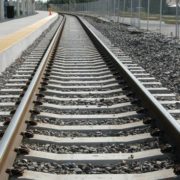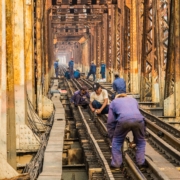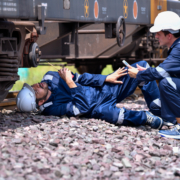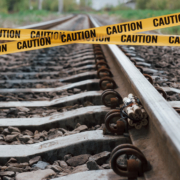Railroad Injuries Caused by Faulty Coupling Systems
A railway coupling system is a mechanism by which rail cars and locomotives are linked together to form a train. The purpose of the system is to securely connect the cars so that they will run smoothly together and not come apart during operations. In the US, AAR couplers are used on mainline freight and passenger rail cars, while newer light rail and transit systems use Scharfenberg couplers.
Railroad coupling systems have gradually evolved over the past couple of hundred years, and today, they are most certainly safer than they were in the early days of the railroad industry. But that said, faulty coupling systems are still an ongoing problem. In fact, in recent years, they have caused or contributed to hundreds of train collisions and derailments.
Here are a few examples:
- The failure of a key coupler component was cited as the cause of a Canadian National derailment in January of 2021 in New Brunswick.
- In February 2018, a high-speed Amtrak train carrying more than 50 passengers decoupled while traveling northbound in Maryland.
- Faulty coupling was cited as the cause of a fatal 2017 logging train derailment in British Columbia.
Coupling system defects put railroad workers and passengers at greater risk of serious injuries and deaths. And when this occurs, railroad companies and other at-fault parties should be held fully accountable. In the case of injured railroad workers in particular, the employer may be strictly liable if the injury is caused by a malfunctioning coupling system – regardless of how much the injured employee may have been at fault.
If you or someone close to you suffered an injury as a railroad worker, it is very important to realize that this type of claim does not fall under the purview of the workers’ comp system. Injured rail workers must file a Federal Employer Liability Act (FELA) claim in order to recover compensation.
At Burge & Burge, we are one of a small number of firms around the country that have extensive experience with FELA claims. Call our office today at 205-251-9000 or send us an online message to discuss your case and how we can help you.
Injuries Caused by Railroad Coupling Systems
Railroad workers have very stressful jobs, and they are exposed to a number of different potential hazards on a daily basis. A coupling system failure is one of those hazards that can result in serious injuries, which may include:
- Sprains and strains
- Torn ligaments
- Bulging or herniated discs
- Torn rotator cuffs
- Dislocations
- Fractures
- Amputations/loss of limbs
- Death
Injured train workers should seek immediate medical attention. In addition, it is very important to keep all follow-up appointments and follow doctor’s orders, so you can have the best chance to recover from your injuries or reach maximum medical improvement (MMI).
Pursuing a Railroad Coupling System Injury Claim
FELA claims are different from workers’ compensation claims in that they require the injured employee to prove negligence on the part of the railroad (or another responsible party) in order to receive compensation. But on the plus side, employees can recover compensation for both direct monetary losses (such as medical bills and lost earnings) as well as noneconomic losses such as pain and suffering and emotional distress. Workers’ comp allows claimants only to recover monetary losses.
Railroads will often try to minimize their losses in a FELA claim by alleging that the employee was at least partially at fault. If successful, this allows them to reduce the amount of damages that they have to pay. When the injury is caused by a malfunctioning coupling system, however, the employer may be strictly liable, meaning that they would be responsible for 100% of damages without regard to comparative fault.
Strict liability is a legal principle under which a party is legally responsible for damages regardless of their potential negligence. This is also commonly known as “negligence per se”. Strict liability is commonly applied in product liability cases, and also in cases where there is the existence of an inherent hazard, such as a dangerous animal.
If a train gets decoupled and injures a rail worker, it may be possible to bring a strict liability claim against the coupling system manufacturer. But the railroad may also be subject to this standard as well. This is largely due to the rules laid out in the Federal Railroad Safety Appliance Act.
One of the provisions of the Act is that trains must be equipped with couplers that couple and uncouple automatically without the need for an individual to be positioned between the ends of the two railcars (in order to uncouple them). So, if something goes wrong with the coupler and a worker has to uncouple it manually and gets hurt in the process, this would be a violation of the Act, making the employer strictly (i.e., fully) liable for the injuries.
Injured in a Railroad Accident? Contact Burge & Burge for Today for Legal Help
If you or a loved one suffered an injury in a railroad accident, whether as a passenger or rail worker, Burge & Burge is ready to go to work for you! Message us online or call our office today at 205-251-9000 for a free consultation with one of our attorneys.












Leave a Reply
Want to join the discussion?Feel free to contribute!